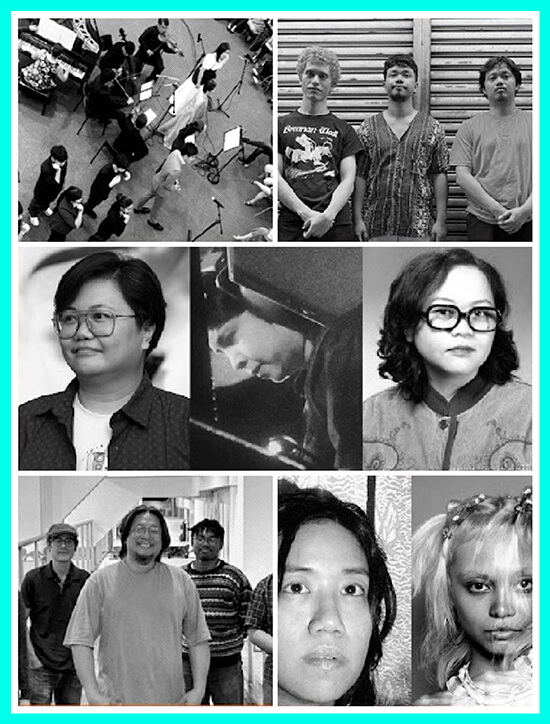Shhh… It might get loud!
Don’t expect to hear crickets when the International Silent Film Festival Manila (ISFFM) returns to Red Carpet Cinema, Shangri-La Plaza from July 11-13, 2025.
In fact, to quote U2 guitarist The Edge in that 2008 documentary where he, Jack White and Jimmy Page jam together in a room: “It might get loud.”
Today, luring humans away from screens to cinemas has become a constant challenge. ISFFM 2025 meets the moment by resurrecting techniques from the early days of cinema: running a silent film, then synching it with live performers and sound effects to create a new hybrid—something unique to each viewing. We’re talking a full performance for each screening. The tradition comes full circle now, and the people behind ISFFM have matched silent entries from Austria (The Life of Beethoven, 1927), Italy (Fra Diavolo, 1925), Spain (Gigantes y Cabezudos, 1926), Japan (The Scent of Pheasant’s Eye,1935) and Germany (Geschichten von Freiheit und Freundschaft, Wie Sich Der Kientopp Rächt and Aschenputtel) with live performances from local musicians and ensembles.

This is a big-scale project. It takes at least a couple years to locate silent films from various international film libraries (in the case of the Philippines, it’s a rapidly deteriorating archive), then find the right bands and performers to breathe life into the old frames and narratives.
This year’s edition is curated with great attention to detail and craft—from The Life of Beethoven, paired with a musical score developed through HearLife, the rehabilitation arm of MED-EL, an Austria-based cochlear-implant provider that teams deaf classical musicians and artists with hearing ones for special performances; to an unusual expression of lesbian love from Japan’s silent era, The Scent of Pheasant’s Eye, orchestrated with soundscapes from Teresa Barrozo, Pat Sarabia and Mariah Reodica.
There will be a rambunctious set by Pepe Manikan’s Progharmonic Orchestra to Italy’s Fra Diavolo that will rely partly on film-scored passages while other sections will spiral into prog-metal jamming.

Psychic Surgeons will match their genre-bending jazz and electronica to the frames of Spain’s Gigantes y Cabezudos; and, performing as Ma.Ma., Joee Mejias and Alyana Cabral will pair their vocal/acoustic/sound design/”primitive maternity” approach to Germany’s Wie Sich Das Kientopp Rächt.
So, yeah. It might get weird. And loud.
Don’t just take it from me, take it from ISFFM festival coordinator Eunice Helera, who said this year’s festival “embraces the exclamation point as its central symbol—a mark that brings excitement, energy, and loudness.”

This year’s edition features new partnerships with Instituto Cervantes, the Philippine Italian Association, Japan Foundation Manila, the Austrian Embassy, and the Goethe-Institut Philippinen.
At the press launch, Retail Operations head of Shangri-La Plaza Corp. Johnny Rios pointed out how Shang Plaza has long had a role as “a space for world cinema to thrive” and to be experienced by wider audiences. “This is, as far as we know, the only silent film festival in Asia, and we’re very proud of that.”
Hunting down rare films can be a challenge for all five participating countries, says Madeline Mitchell-Diolanda, Austrian Embassy Press Education and Cultural Affairs officer: “We get in touch with film institutions back home to find old films. We don’t know what films we’re going to get. But we have wonderful musicians here willing to work with us.”
Since the Austrian entry focuses on Beethoven, who was famously deaf by the end of his composing life, the choice of HearLife to score the film is fitting, though there were other challenges: the film’s captions were in French, “so we needed to translate that to English, and then that had to be translated into Filipino sign language for the audience,” notes Mitchell-Diolanda.
Instituto Cervantes cultural officer Jose Maria Fons Guardiola pointed out the difficulty of tracking down existing silent Filipino films due to humidity and decay of stock, though he thanked Mowelfund for their continuing preservation efforts and promised the next edition will include a local film in the lineup.
Japan Foundation Manila assistant director Matsuda Eisuke said their entry is “a deeply moving and quietly revolutionary story on lesbian sexuality” set in the 1930s. “At the time, the term ‘lesbian’ didn’t even exist.” Accompanying the opening film on July 11 will be a special performance from Nanako Yamauchi, a benshi or silent film narrator, providing live interpretation of the Japanese film selection. “This is a traditional art that is much more rare now,” offering audiences an immersive cultural experience.
For Philippine-Italian Association general manager Guinell Flores, finding a silent film from Italy’s archives was “quite easy, it took a few emails and a few hours.” He tapped Pepe Manikan’s ensemble, which they’d worked with previously, to score the story of an Italian patriot opposing Napoleon’s occupation of Naples.
ISFFM 2025 is not just a return, says Helera, but a “reimagining of what the festival can be.” Jose Maria notes when they began in 2007, people would come and go from postings, but over the years “we have become friends,” creating a small community dedicated to elevating the typical film fest experience into something more like a performance.
The question hangs there: Why watch silent movies now?
Matsuda says it’s a way of studying the form: “In silent film, you have to deliver the scene through gesture, expression. It’s very different from what we do currently.”
Jose Maria adds, “I would add it’s the same question of why do we read classic novels from the 19th, 20th century? Because they still have something to tell us, and classic cinema is the same.”
For Instituto Cervantes director Francisco Javier Lopez Tapia, ISFFM is also “a way also to bring people back to the cinemas.” While small screens beckon, the festival is a way to experience something fresh and new on big screens: “This is a way to make it more of a community experience again.”
The festival runs from July 11 to 13 at Red Carpet Cinemas, Shangri-La Plaza, with a pocket screening event taking place on July 14 at Cine Adarna, UP Film Center.
* * *
For more details visit International Silent Film Festival in Manila on Facebook.


